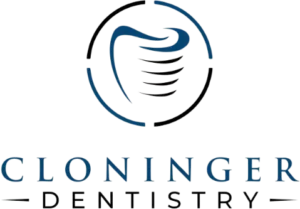Understanding Dental Extractions
Dental extractions may feel daunting, but they are sometimes necessary for maintaining optimal oral health. At Cloninger Dentistry, we believe in providing informative guidance about the reasons and types of tooth extractions.
Why Tooth Extraction is Necessary
Tooth extraction may be essential due to various conditions that compromise the health of the tooth and surrounding tissues. Some common reasons include:
- Severe Tooth Decay: When tooth decay affects the pulp, and a root canal procedure is no longer feasible, extraction is often the only solution (Draper Family Dentistry).
- Gum Disease: Advanced gum disease can weaken the support structures of the teeth, necessitating extraction for the preservation of overall mouth health.
- Impacted Wisdom Teeth: Wisdom teeth can become trapped in the jaw, causing pain and potential infection.
- Overcrowding: Sometimes, teeth need to be removed to facilitate orthodontic treatment or to relieve overcrowding in the mouth.
- Fractured or Broken Teeth: Severe fractures may lead to the need for extraction when a restoration isn’t viable.
These conditions underscore the importance of regular dental visits. We recommend the importance of routine dental check-ups and cleanings to prevent conditions necessitating extraction.
Types of Dental Extractions
There are two main types of dental extractions, each suited to different situations:
-
Simple Extraction: This is performed on visible teeth that are intact and can be easily loosened using local anesthesia. The dentist will use specialized instruments to remove the tooth without surgical intervention.
-
Surgical Extraction: This procedure is required for teeth that are not easily accessible, such as impacted wisdom teeth or teeth that have broken off at the gum line. Surgical extractions involve incisions in the gum to access the tooth, often requiring sedation for patient comfort.
| Type of Extraction | Description | Common Situations |
|---|---|---|
| Simple Extraction | Removing visible teeth using local anesthesia | Loose or damaged teeth |
| Surgical Extraction | Involves surgery to remove teeth not easily accessible | Impacted wisdom teeth, broken teeth |
Understanding why a tooth extraction may be necessary and the different types can help alleviate anxiety surrounding the procedure. If you have any questions about your dental needs, we invite you to explore our resources on managing dental anxiety with strategies for a stress-free appointment (managing dental anxiety: strategies for a stress-free appointment).
Benefits of Tooth Extraction
We understand that tooth extraction can be a daunting experience, but it can offer several crucial benefits for our oral health. Among these benefits are oral health improvement and significant pain relief that can enhance one’s overall quality of life.
Oral Health Improvement
Tooth extraction plays a vital role in maintaining oral health. In many cases, the procedure is necessary to reduce harmful bacteria that can lead to further dental issues. For instance, in cases of advanced decay or infection, removing the affected tooth helps prevent the spread of infection to other teeth and the surrounding gum tissue (WebMD).
Moreover, tooth extraction can be essential for individuals experiencing crowding in their mouths. By creating space, it enables proper alignment for orthodontic procedures, supporting a healthier bite and overall dental structure. Extraction may also be necessary for those with severe periodontal disease, allowing us to target treatment more effectively.
| Benefit of Tooth Extraction | Description |
|---|---|
| Reduces Harmful Bacteria | Prevents further damage to teeth and gums |
| Supports Orthodontics | Creates space for proper alignment |
| Addresses Severe Periodontal Disease | Allows targeted treatment for infections |
Pain Relief
One of the most immediate benefits of tooth extraction is pain relief. For individuals dealing with severe damage or infection in a tooth, the extraction process can alleviate discomfort almost instantly (Cleveland Clinic). When a tooth is severely broken or infected, it can cause significant pain, impacting daily life and overall well-being.
After the procedure, many patients report a rapid decrease in pain and discomfort, making it easier to return to normal activities. Tooth extraction serves as a decisive solution to end ongoing dental pain and facilitate a path toward recovery.
| Immediate Benefit | Description |
|---|---|
| Alleviates Pain | Reduces tooth-related discomfort instantly |
| Facilitates Recovery | Allows for healing and dental treatment post-extraction |
At Cloninger Dentistry, we prioritize understanding dental extractions: when and why they’re necessary for our patients. Our commitment is to ensure you and your family receive the best care while addressing any dental needs, including the necessity of extractions when appropriate. For more on maintaining your dental health, check out our articles on the importance of routine dental check-ups and cleanings and the connection between oral health and overall well-being.
Recovery After Tooth Extraction
After we undergo a tooth extraction, understanding the recovery process is essential for ensuring optimal healing. In this section, we will cover normal side effects and the healing process to guide us through the post-extraction period.
Normal Side Effects
Following a tooth extraction, it is common for us to experience several normal side effects. These may include:
- Bleeding: Some bleeding is expected immediately after the extraction. This typically subsides within a few hours.
- Swelling: Facial swelling around the extraction site is normal and can peak within the first couple of days.
- Discomfort: Mild to moderate pain is common, and we can manage this with over-the-counter pain relievers as recommended by our dentist.
Recovery times can vary based on the complexity of the extraction. Generally, we can expect to return to our routine activities within 48 to 72 hours (Cleveland Clinic).
| Side Effect | Duration |
|---|---|
| Bleeding | A few hours |
| Swelling | 2-3 days |
| Discomfort | 1-3 days, manageable |
Healing Process
During the healing process, we must take specific care to support recovery. The following guidelines can help:
- Diet: We should avoid solid foods for the first 24 to 48 hours. Soft foods like yogurt, applesauce, and smoothies are recommended. Hard, spicy, or crunchy foods should be avoided to minimize the risk of complications (Aspen Dental).
- Oral Hygiene: Gently rinsing with warm salt water can help keep the extraction site clean, but we should avoid brushing the area directly.
- Rest: Taking it easy allows our bodies to heal effectively.
While most recoveries are straightforward, we must be aware of potential complications. Risks associated with tooth extraction include dry socket, infection, and damage to nearby teeth or nerves (Healthline).
For more information on maintaining our oral health during recovery, we can refer to other articles, such as the importance of routine dental check-ups and cleanings and tips for maintaining optimal oral hygiene at home.
Risks of Tooth Extraction
While dental extractions are often necessary for maintaining oral health, it is essential to understand the potential complications and risks involved. We believe in being transparent with our patients at Cloninger Dentistry about what to expect during and after the procedure.
Potential Complications
Tooth extraction, like any surgical procedure, carries certain risks. Common complications include:
- Dry Socket: This occurs when the blood clot at the extraction site fails to develop or becomes dislodged, leading to significant pain and delayed healing.
- Infection: There is a risk of infection at the extraction site, which may require additional treatment or antibiotics.
- Damage to Nearby Teeth or Nerves: In some cases, adjacent teeth or nerves may be affected during the extraction process.
- Persistent Pain and Swelling: Some individuals may experience ongoing discomfort or inflammation long after the procedure, signaling the need for further evaluation.
It’s crucial to seek immediate attention from our dental professionals if you face any of these issues. According to Healthline, proper post-operative care can mitigate many of these risks.
| Complication | Description |
|---|---|
| Dry Socket | Painful condition due to loss of blood clot after extraction |
| Infection | Risk of contamination at the extraction site |
| Nerve Damage | Potential for damage to nearby nerves or teeth |
| Prolonged Pain/Swelling | Ongoing discomfort requiring medical review |
Post-Procedure Care
After a tooth extraction, proper care is vital to ensure smooth recovery. Initially, it is normal to experience some pain, swelling, and residual bleeding. Recovery typically lasts a few days, but the complete healing of the jawbone may take several weeks (Cleveland Clinic). Here are some essential post-procedure care tips:
- Manage Bleeding: Apply gentle pressure with gauze for the first few hours. If bleeding persists, contact us immediately.
- Pain Management: Over-the-counter pain relievers may be recommended. Follow the prescribed dosage and consult our team if pain becomes unmanageable.
- Avoid Strenuous Activities: Limit physical activity for at least 24 hours post-extraction to reduce the risk of complications.
- Follow-Up Appointment: Schedule a follow-up visit to monitor healing and discuss options for replacing the missing tooth.
If you notice severe bleeding or pain that continues after four hours, or if you experience symptoms like fever, chills, or unusual redness around the extraction site, it’s crucial to reach out. We prioritize your health and well-being, and our team is here to support you every step of the way. For more valuable insights on oral health, explore our articles on the connection between oral health and overall well-being and the importance of routine dental check-ups and cleanings.
Dental Implants vs. Tooth Extraction
Making the right decision between dental implants and tooth extraction requires a thorough understanding of both options. At Cloninger Dentistry, we prioritize your dental health and help you navigate this choice.
Dental Implant Procedure
Dental implants provide a long-lasting solution for missing teeth. They are designed to mimic the structure and function of natural teeth. The procedure typically involves several stages:
- Initial Consultation: In this first step, we evaluate the patient’s mouth, assess bone density, and discuss medical history.
- Implant Placement: The dental implant, a small titanium post, is surgically placed into the jawbone. This process requires sufficient bone to ensure stability.
- Osseointegration: After placement, the implant undergoes a healing phase where it fuses with the jawbone, usually taking several months. This step is crucial for a successful outcome.
- Abutment Attachment: Once osseointegration is complete, an abutment is attached. This piece connects the implant to the crown (the visible portion).
- Crown Placement: Finally, a custom crown is placed to complete the restoration.
The overall timeline can vary from a few months to over a year, depending on individual healing times and conditions. Dental implants are almost as strong as natural teeth and provide a functional long-term solution (WebMD).
Risks Associated with Implants
While dental implants are generally safe, some risks are associated with this procedure. It’s vital to understand these risks before moving forward:
| Risk | Description |
|---|---|
| Failure of Osseointegration | The implant may not properly fuse with the jawbone, leading to failure. |
| Improper Implant Placement | Incorrect positioning can affect function and aesthetics. |
| Sinus Damage | Upper jaw implants can potentially impact sinus cavities. |
| Infection | Post-surgical infections can complicate the healing process. |
| Nerve Damage | Placement near nerves can lead to numbness or tingling. |
| Effects on Adjacent Teeth | Implants can impact neighbouring teeth if not properly managed. |
Complications can lead to implant failure, requiring removal or replacement of the device (WebMD). Patients should discuss all risks with us, disclose any health conditions or medications, and ensure adjacent teeth are evaluated for issues prior to proceeding.
Additionally, conditions such as bruxism (teeth grinding) and medications like bisphosphonates can further complicate the success of implants (PMC). Remember, at Cloninger Dentistry, we are here to support you through every step of the dental health journey. For more information on maintaining optimal oral hygiene, consider reading our article on tips for maintaining optimal oral hygiene at home.
Tooth Extraction Process
Understanding the tooth extraction process helps us feel more at ease when facing dental procedures. In this section, we will detail the necessary pre-extraction preparations and the various extraction techniques used.
Pre-Extraction Preparations
Before any extraction, it is essential to carry out appropriate preparations to ensure a smooth and safe procedure. A comprehensive history taking, clinical assessment, and pre-extraction radiographs are crucial components of this preparation. These steps help foresee potential difficulties and allow us to adapt our approach accordingly.
Key preparations include:
- Patient Consent: Obtaining informed consent from the patient is fundamental prior to any procedure.
- Local Anesthetic Administration: We typically administer a local anesthetic to numb the area surrounding the tooth that needs to be extracted.
- Assessment of Patient Health: Evaluating any existing medical conditions helps us mitigate risks during the extraction.
| Preparation Step | Description |
|---|---|
| Patient Consent | Informed consent is obtained |
| Local Anesthetic | Administered to numb the area |
| Clinical Assessment and Radiographs | Helps foresee difficulties in extraction |
For more on maintaining oral health, visit our guide on the importance of routine dental check-ups and cleanings.
Extraction Techniques
After completing pre-extraction preparations, we can proceed to the extraction itself. The techniques used may vary based on the tooth’s condition and placement. Atraumatic extraction techniques aim to minimize trauma during the removal process.
Common extraction methods include:
- Standard Extraction: For visible teeth, we utilize forceps to grasp and gently remove the tooth once its surroundings have been adequately numbed.
- Atraumatic Techniques: Methods involving instruments like luxators and elevators help in removing the tooth while preserving surrounding bone, which is beneficial for future implant placement.
- Impacted Tooth Extraction: If the tooth is impacted, meaning it has not fully emerged from the gum, we may need to cut away gum and bone tissue.
Post-extraction, we apply specific interventions to manage any complications, such as using pressure packs to stop bleeding, as well as assessing for potential issues like dry socket. For a deeper understanding of caring for your teeth post-extraction, check our article on managing potential complications and tips for maintaining optimal oral hygiene at home.
Understanding this process better prepares us for what to expect and reinforces why we should choose Cloninger Dentistry for all of our and our family’s dental needs. We prioritize patient comfort and safety every step of the way.
Factors Influencing Tooth Extraction
Understanding the factors that influence tooth extraction is vital for making informed decisions about oral health. Here, we will explore the conditions that may require extraction and the evaluation and treatment planning that precedes the procedure.
Conditions Requiring Extraction
Tooth extraction is generally considered a last resort in dentistry. Dentists may recommend extraction when other treatment options are not viable. Some common conditions that may necessitate a tooth extraction include:
| Condition | Description |
|---|---|
| Severe Tooth Decay | When tooth decay is so advanced that the pulp is affected, extraction may be necessary, especially if a root canal is not viable. Draper Family Dentistry |
| Gum Disease | Advanced gum disease can loosen teeth or create pockets of infection, leading to the decision for extraction. |
| Overcrowding | If there is insufficient space for teeth, particularly before orthodontic treatment, a dentist may recommend extraction to prevent crooked teeth and decay. Draper Family Dentistry |
| Impacted Wisdom Teeth | Wisdom teeth that cannot emerge properly can cause pain, infection, or damage to adjacent teeth, making extraction necessary. |
| Fractured or Broken Teeth | If a tooth is severely broken or damaged due to trauma or hard substances, extraction may be required if restoration options are not feasible. Draper Family Dentistry |
We understand that having healthy teeth is crucial for overall well-being. Therefore, recognizing the signs that may indicate the need for extraction is essential.
Evaluation and Treatment Planning
Before proceeding with a tooth extraction, a thorough evaluation and treatment planning process is essential. This involves several steps:
-
Examination: The dentist will perform a comprehensive oral examination, including X-rays, to assess the condition of the tooth and surrounding tissues.
-
Diagnosis: Based on the examination, the dentist will diagnose the specific issues affecting the tooth and determine whether extraction is necessary.
-
Treatment Discussion: The dentist will discuss available options with the patient, including the benefits and risks of extraction as well as potential alternatives if applicable.
-
Pre-Extraction Preparations: Preparing for extraction may involve scheduling an appointment for the procedure, discussing sedation options, and providing instructions for care before and after the extraction.
-
Considering Patient History: The dentist will take into account any medical history or conditions that may influence the extraction process, ensuring the highest level of safety and care.
We emphasize the importance of this thorough evaluation to ensure that extraction is truly necessary and that the patient receives appropriate care tailored to their specific needs. Ensuring your oral health is a journey, and we are dedicated to guiding you through every step, from regular check-ups to potential extractions and beyond. For more information on maintaining oral hygiene, visit our article on the importance of routine dental check-ups and cleanings.










